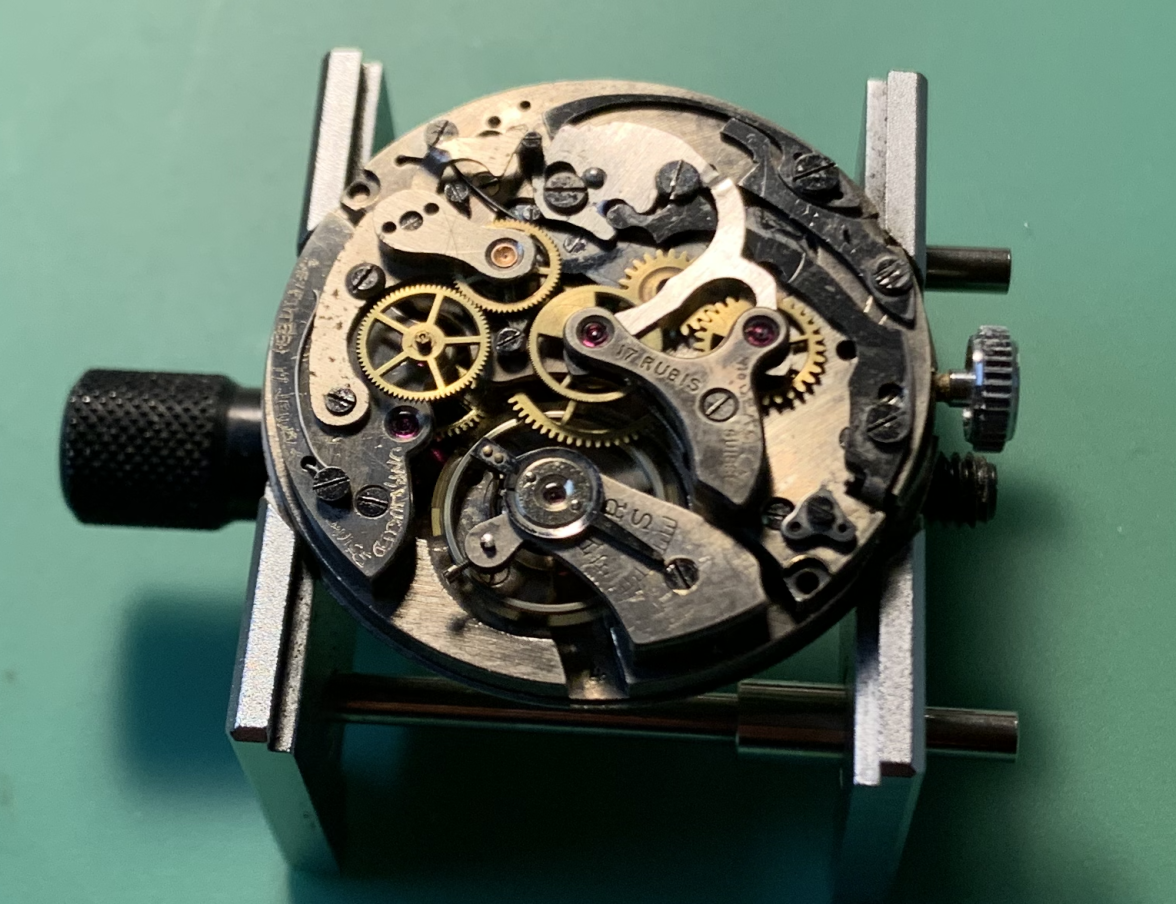sheepdoll
·So I got the 'Bunny' Landeron 48 chronograph back together. When installing the activating lever I bunged the minute jumper. Also missing the piano wire springs on the flyback lever which may be the one I used for the 'goat' Landeron 48.
The issue with both Goat and Bunny is that when I engage the chronograph, the watch ticks for about 15 to 20 seconds then stops.
Should the exentric cams be adjusted? The books and guides state not to turn or remove these as moving them can make them come loose. There are also indications that if one is moved then the others need to be moved as well.
Goat was somewhat corroded, So I can understand that the adjustments might be needed. Bunny on was fairly clearn and recently disasebled before cleaning.
Curious that they both seem to have the same problem.
I have yet to get or make or fix a Timegrapher. The balance seems to have good amplitude, but I do not know if they are in beat. The hands are on Goat and it seems to loose a minute or so a day. Sometimes I forget to wind it.
Could the beat also affect this stopping?




